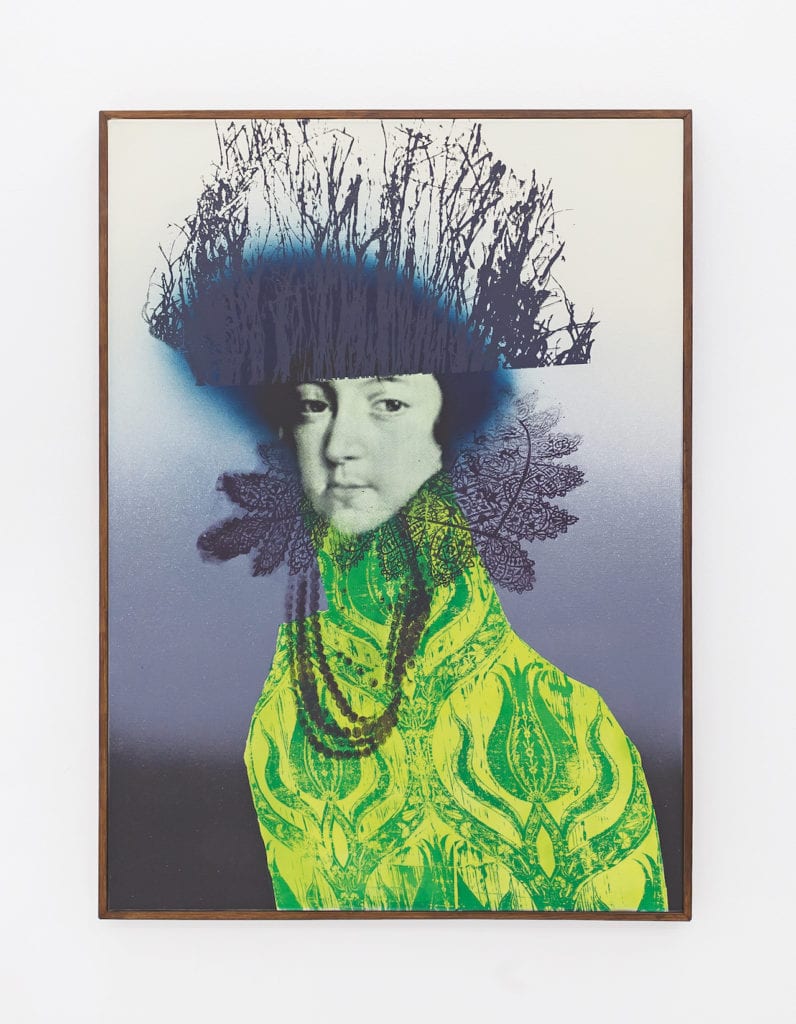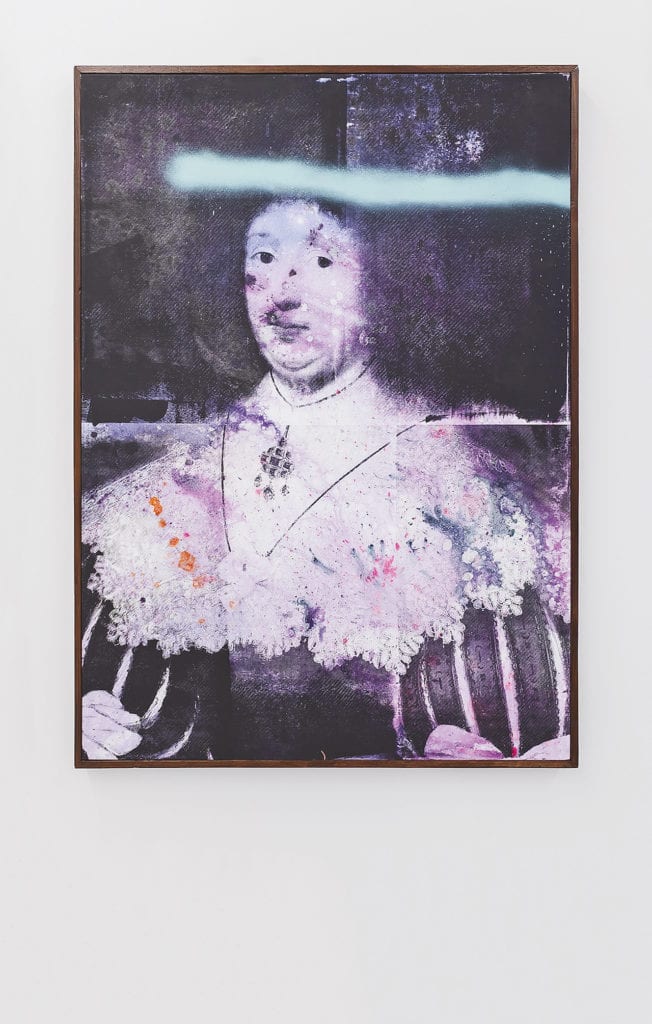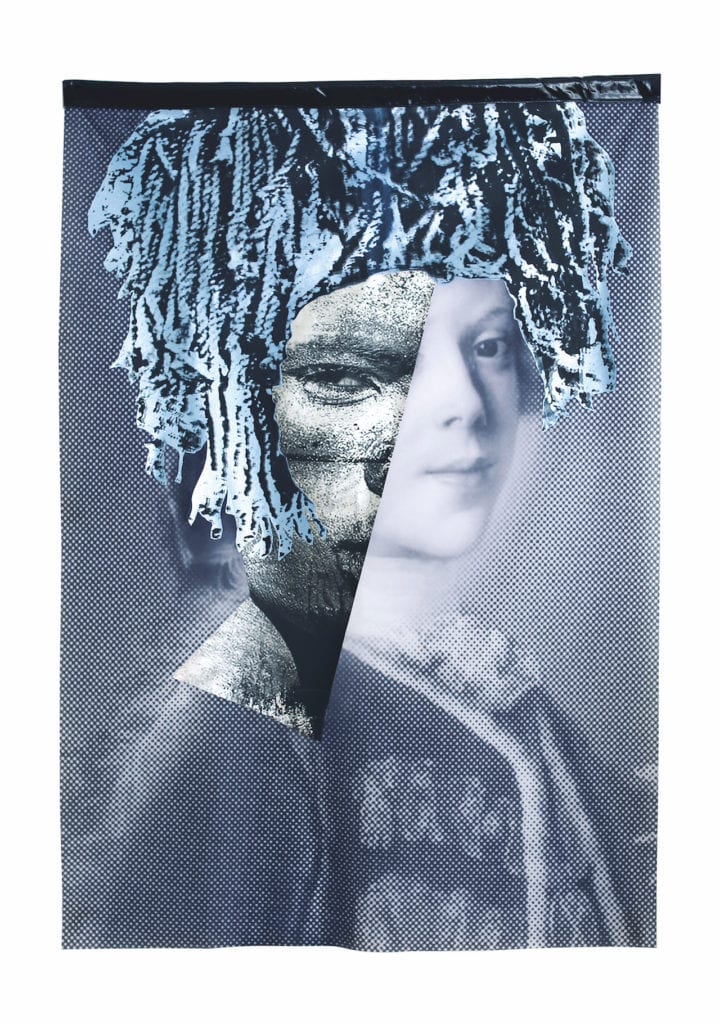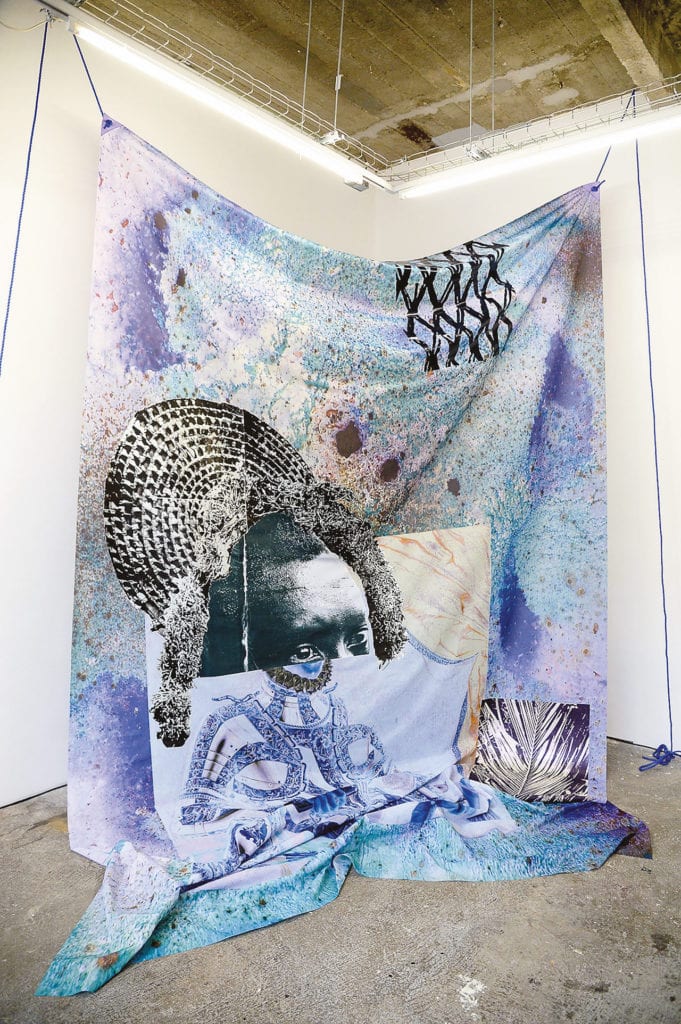Futures, a platform dedicated to emerging photographers, returns to Unseen this year with another crop of fresh talent. The initiative brings together 12 cultural institutions from across Europe to promote upcoming artists. For its contribution, British Journal of Photography is platforming the work of five of its Ones To Watch, including Raphaël Barontini. Here, we revisit the article published in our Ones To Watch issue in May 2019, written by Marc Feustel.
The title of his 2018 solo exhibition in Istanbul, Tapestry from an Asteroid, evokes the breadth of influences and otherworldly quality of French artist Raphaël Barontini’s work. His assemblages combine icons of classical painting with photographic fragments, silkscreened images with digital printing, and monochrome images with bold splashes of colour, all of which is layered onto owing textiles. The images he creates in this way draw as much from the canon of art history as they do from a hallucinatory, fantasised and poetic future.
While Barontini is not primarily a photographer, his works always integrate photographic elements. “Photography is a constant and indispensable part of my work,” he explains. Each piece begins with a digital collage of images from multiple sources, whether these images come from his own archive – photographs of classical works of art taken on his frequent visits to museum collections, or formal compositions observed on the street – or are found online. These images are then silkscreened onto his chosen support in order to “include both photography and the materiality of painting” in the work.
“While I attach a great deal of importance to the fixed frame of classical painting,” he explains, “I have always been interested in creating works on textile materials that are outside that realm.” Flags, banners, pennants, curtains, tapestries – Barontini makes constant use of textiles to give his work a more fluid quality and to allow him to explore the possibilities of spatial installation.

His compositions are portraits of a kind, although not of a single, specific individual. Instead he describes himself as “the portraitist of a poetic, fantasised reality”. He compares his approach to portraiture to that of a collagist, citing the Dadaist Hannah Höch or African-American collagist Romare Bearden as in uences.
In describing his practice, Barontini often uses the term ‘creolisation’ associated with writers and thinkers of the French Caribbean (where Barontini has roots), such as Édouard Glissant and Aimé Césaire. The term, which refers to the multiplicity and hybrid nature of identity, is well-chosen as it encapsulates his multilayered approach based on manifold influences, and also on the subject matter of his work, which includes classical iconography, colonial history and the visual culture of the French Caribbean.
On first seeing Barontini’s work, Peggy Sue Amison, the artistic director of East Wing in Dubai, describes being awestruck by “how he effortlessly mixes art history and modern technologies in order to present us with an exciting new visual language – a cut-and-paste mix of global histories and textures that reflects on the glitches of modern civilisation.”
futures-photography.com



